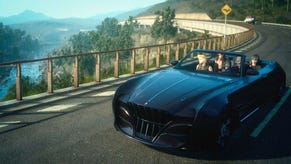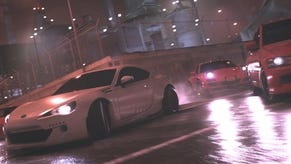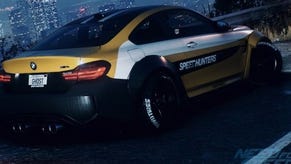Face-Off: Need for Speed
Dead heat?
UPDATE 11/11/15 4:45pm: Ghost Games have got in touch with this comment about our article, specifically about missing detail on the PS4 version of the game: "We're aware of the missing road detail in some areas of the world and are addressing this in an upcoming patch."
Original Story: Ghost Games' current-gen launch title Need for Speed: Rivals delivered a solid, if somewhat conservative multi-platform showing on PS4 and Xbox One - we saw 1080p resolution on both systems, with only minor differences in ambient occlusion and depth of field effects, lending the Sony platform a minor advantage. Two years on, and its clear that the developers have pushed the console silicon harder this time around.
The new Need for Speed reboot switches things up from a visual perspective: the large open world structure of Rivals returns, but this time there's a focus on night-time racing and car customisation options that hark back to the popular Underground titles from the series' PS2 era. The developer also ramps up the level of lighting and effects, with reflections and post-processing taking centre stage. However, these changes also prove to be more demanding on console hardware, resulting in slightly less stable performance, along with a drop in resolution on the Microsoft platform.
On PlayStation 4, it's business as usual with a native 1080p presentation in place, while the Xbox One release sees a 900p pixel-count. Heavy use of post-processing creates a soft focused image across both consoles, which goes a long way to closing the gap from a visual perspective. At times, there is not much in it with regards to image quality: PS4 wins out in slow moving scenes, but during fast-paced races, the combination on a film grain style effect working in combination with motion blur almost seem to make the differences in the visual presentation academic. Despite the soft nature of the presentation, image quality holds up well in other areas - a post-process anti-aliasing solution provides clean edges that appear smoother across near-field scenery and sub-pixel details.
The heavy use of post-processing is a fundamental aspect in creating Need For Speed's distinctive filmic image. The use of grain, motion blur, and depth of field in combination with realistic physically-based lighting allow the game to pass for filmed video footage during some pre-race sequences and cut-scenes, although the illusion is broken once gameplay begins. Another interesting choice is the decision to mix filmed footage with in-engine visuals for certain objects during the cut-scenes. The player-selectable cars are displayed using computer generated models, while real vehicles are used on cars that the actors interact more frequently with.
The core assets and extensive effects work mostly translates to an equal standard across both versions of Need for Speed, with the same range of graphical features deployed on both PS4 and Xbox One. For example, the use of bokeh depth of field is now present on both consoles - whereas in Rivals the effect is absent on the Xbox One - while motion blur and film grain are also applied with the same level of quality. Texture detail and filtering is also a match, although the PS4 gains a small advantage with regards to level of detail streaming, where distant scenery is resolved to a higher degree across the environment. Ambient occlusion is also given a more advanced implementation on the PS4 too, which see the appearance of extra self-shadows projected across the cars during the the mixed video/in-engine cut-scenes.
There are more unusual variances in other areas though; in some scenes we see the PS4 lacking an extra normal map and texture layer used on Xbox One to add details to puddles of water in the ground on wet surfaces, while light sources sometimes appear brighter and feature a stronger bloom component. Given that artwork and effects generally appear identical in these areas elsewhere the differences here seems more like unintentional oversights as opposed to a calculated downgrade.
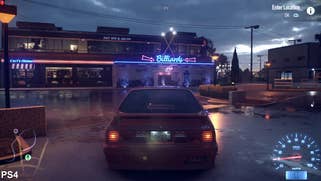
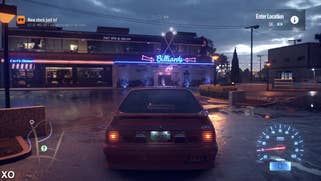

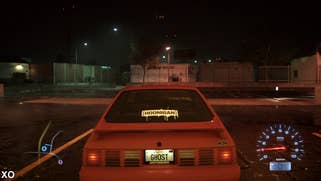
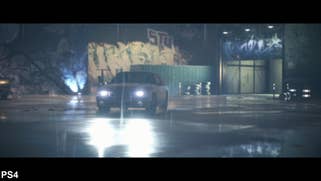
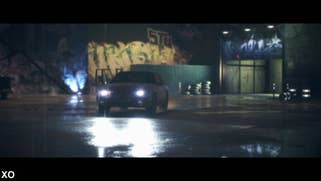

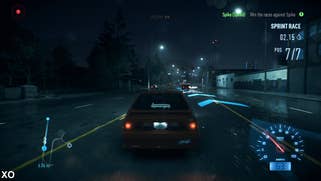
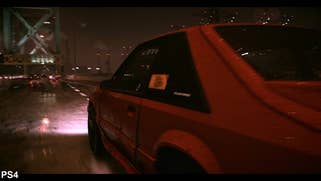
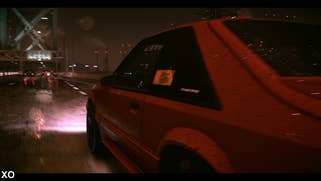

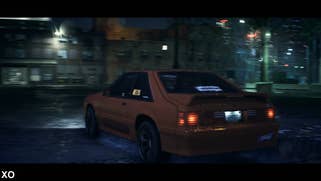


Moving on, and the extensive use of post-processing and effects work is clearly central to forming Need for Speed's distinct filmic appearance. However, this comes at a cost to performance: frame-rates aren't quite as stable as Need for Speed: Rivals, with small but frequent dropped frames occurring over the run of play.
These mild drops in frame-rate have little impact on the playability of the title in the grand scheme of things, but they do lead to some uneven motion - think of it as a mild blemish on an otherwise solid level of performance. We get the sense that the game's heavy use of motion blur helps to smooth over the dips to some extent, but on the whole, the title's fluidity isn't quite as solid as its predecessor.
In last year's Dragon Age: Inquisition, we saw EA's Frostbite engine actually hand in superior frame-rates on Xbox One, owing to small reductions in visual features on top of the resolution differential. However, in the new Need for Speed, a closer lock on visual parity combined with the additional load of the latest Frostbite 3 features effectively rules this out. In our performance tests, the games are effectively like-for-like. To get any kind of substantial improvement over what the consoles are offering, it's the PC version you'll need - but that's not available right now.
Need for Speed - the Digital Foundry verdict
Need for Speed feels like an homage to past titles in the series, taking inspiration from the b-movie live action cinematics from Undercover, the police chases from Most Wanted, and the night time 'street' aesthetic from the Underground instalments. It's a mish-mash of ideas that work well enough, with customisable handling allowing fans to carve out their own driving play style.
The night-time setting also allows for Ghost Games to unleash a highly stylised, often impressive aesthetic, creating a world that occasionally does a decent job at passing as filmed footage - a bold evolution in the game's visual direction. DICE's Frostbite engine - complete with its latest upgrades for physically-based lighting - is a perfect fit here, and for the most part Ghost Games translates the core experience to a good standard across both consoles.
All of which leaves us with another discussion point in the great resolution debate. Back in February, we made the case that many of the titles we test with a 900p/1080p resolution differential look and play much the same, with the move towards improved anti-aliasing and more advanced post effects closing the gap still further. Need for Speed bears this out quite nicely - PS4 inches ahead due to the extra clarity provided by the native 1080p resolution, but there's nothing you're really likely to actually miss, especially during fast action gameplay. In this sense, the two games are effectively identical - an already soft game on PS4 looks just a little softer on Xbox One.
Going forward we suspect it's up to the PC version to potentially provide the definitive gameplay and graphical experience. The Frostbite engine scales up beautifully on PC, with titles such as Battlefield 4 and the recent Star Wars Battlefront using higher quality effects work that takes advantage of the increase in GPU power available. There's the ability to really push resolution, but really it's the leap to 60fps that we really want to see - and that's what the developer is intent on delivering. The PC release is delayed until some time in Spring 2016, and we'll be taking an in-depth look as soon as we can.



